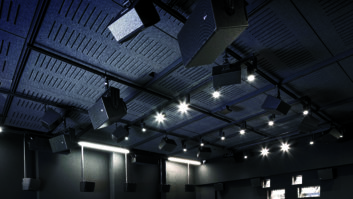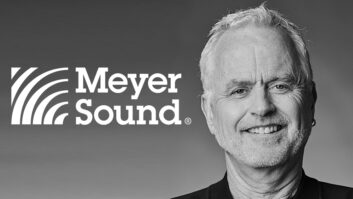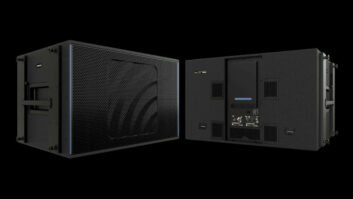
Graz, Austria (July 7, 2020)— Sound artist Bill Fontana’s latest installation, Primal Energies, opened July 1 at the Kunsthaus Graz in Graz, Austria, using the spatialization abilities of Meyer’s Spacemap Go software, currently in Beta, to envelop visitors in audio.
Taking over the museum’s Space 01 Gallery, Primal Energies explores ideas about renewable energy through a mix of video imagery and soundscapes that portray wind, solar, hydroelectric and geothermal resources. While viewing images on the eight large screens, visitors are immersed in a blend of energy-related sounds reproduced by 64 Meyer Sound self-powered loudspeakers sharing audio with dynamic spatial sound movements created and automated using a beta version of Meyer Sound’s soon-to-be-released Spacemap Go technology.
Sounds and images for the work were recorded on location by Fontana with assistance from Scott George of London-based Autograph Sound. During this preparatory period, Fontana and George were recruited to serve as beta testers of Spacemap Go. A spatial sound design and mixing tool designed to work with Meyer’s Galaxy network platform, Spacemap Go allows users to enact multi-channel panning using one or more iPads connected to systems comprising multiple Galaxy processors.
Toei Translates with Meyer Sound
“We used Spacemap Go extensively on Primal Energies,” says Fontana. “It’s the ‘digital brain’ behind all that is happening with dynamic spatialization of sound. In that realm, it lets me do everything I did before using the D-Mitri system, but working directly with Galaxy makes it far more cost effective, particularly if you are planning something like a permanent installation in a museum or architectural setting.”
Using the iPad app for Primal Energies, Fontana noted, “We used the iPad to set up everything on site. We wanted to create a kind of sonic choreography through the space, and the flexibility of Spacemap Go made it the ideal tool for making that happen.”
Scott George spec’d the audio system, developing the matrixed grid of 56 Meyer Sound UPM-1PTM full-range loudspeakers augmented by eight 900-LFCTM low-frequency control elements. For the front end of the audio system, George specified a MacMini computer loaded with QLab software for the 24-channel playback and central show control, connecting to the four distributed Galaxy processors over an AVB network. All the spatial trajectories were created on site with Spacemap Go then saved as a file for automated panning in synchronization with the playback program.
Fontana noted that he found Spacemap Go useful for “deconstructing” the typical video soundtrack. “Here, the sounds are not localized to a specific video,” he said. “They are all related to the common theme, but sounds are shifting around throughout the space, more like a dream space, so you have this incredible enveloping sound experience as you move from screen to screen. For my purposes, Spacemap Go is fantastic.”
Meyer Sound • www.meyersound.com







